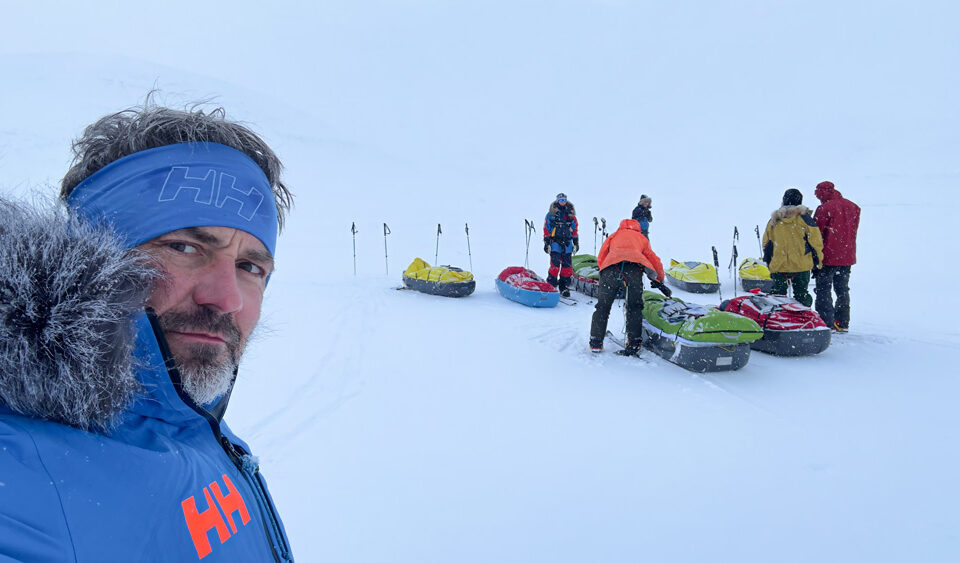Growing a thriving business with a small team is one of the most exhilarating journeys in professional life. When energy is high, creativity is flowing, and momentum is building, the possibilities feel limitless. Yet this growth phase is precisely when the most crucial management decisions are made—choices that will either amplify your team’s natural talents or inadvertently create friction that slows everything down.
For teams looking to maintain their upward trajectory and leaders committed to building something that lasts, understanding the human element of small team dynamics isn’t just nice-to-have – it’s the fundamental differentiator between businesses that scale successfully and those that plateau.
The High Cost of Misalignment
When team members are forced into roles that contradict their natural tendencies, the damage runs deep. Detail-oriented, methodical people pushed into charismatic client presentations. Visionary idea generators expected to track every minute implementation detail. This fundamental misalignment creates invisible friction that eventually manifests as burnout.
Several assessment tools can illuminate these natural tendencies:
- CliftonStrengths: Maps 34 talent themes across four domains (Strategic Thinking, Executing, Influencing, and Relationship Building), showing where people naturally excel
- DISC Profile: Categorizes behavioral preferences around Dominance, Influence, Steadiness, and Conscientiousness
- Myers-Briggs Type Indicator (MBTI): Identifies 16 personality types based on how people process information and make decisions
- Big Five Personality Traits: Measures Openness, Conscientiousness, Extraversion, Agreeableness, and Neuroticism
- VIA Character Strengths: Identifies 24 character strengths that contribute to human flourishing
Regardless of the lens, the principle remains: When people work against their natural patterns, something breaks. Introverts forced into constant high-energy interactions without recovery time gradually dim. Big-picture thinkers drowning in tedious documentation develop anxiety. The misalignment creates a particular kind of exhaustion that seeps beyond work into every aspect of life.
The Micromanagement Death Spiral
Micromanagement in small teams rarely stems from malice, but from fear. Fear that things won’t get done correctly. Fear that letting go means losing control. Fear that leadership performance will be judged by the team’s output.
The psychological impact of micromanagement, however, is devastating:
- Constant cortisol spikes from perpetual monitoring
- Eroded confidence when nothing is ever “good enough”
- Killed intrinsic motivation, replaced by anxious compliance
- Building resentment leading to disengagement or departure
Creativity vanishes. Initiative disappears. Sleep becomes elusive as stress becomes chronic.
Several leadership approaches offer alternatives to micromanagement:
- Situational Leadership: Adapts management style based on team member’s competence and commitment level
- Servant Leadership: Flips traditional power dynamics, focusing on removing obstacles rather than controlling every move
- Results-Only Work Environment (ROWE): Emphasizes outcomes over process, giving freedom in how clear objectives are achieved
- Transformational Leadership: Inspires and motivates through vision rather than control
- Coaching Leadership: Develops people’s capabilities through guidance rather than direction
Each approach recognizes that adults don’t need childlike management. They need clear expectations, necessary resources, and freedom to apply their unique strengths.
The Communication Breakdown
In small teams, poor communication becomes toxic. When expectations live only in the leader’s head, when feedback happens only during crisis, when weaknesses get magnified while strengths go unacknowledged, psychological damage accumulates.
Different team members need different communication approaches. Some frameworks that illuminate these differences:
- DISC Communication Styles: Reveals preferences for direct vs. thoughtful communication and task vs. people focus
- Emotional Intelligence (EQ): Highlights awareness of communication preferences and their impact
- Active Listening Techniques: Creates psychological safety through validation and curiosity
- Nonviolent Communication (NVC): Separates observations from evaluations and connects needs to requests
- Communication Styles Inventory: Identifies patterns across assertiveness and responsiveness dimensions
Forcing everyone into identical communication patterns creates unnecessary strain. Conflict-averse team members internalize tensions rather than voicing concerns in high-pressure environments. Direct communicators feel muzzled when constantly expected to soften their message.
The Boundaries That Aren’t
Small teams often develop a dangerous illusion of family—with all the dysfunction and none of the unconditional acceptance. Work/life boundaries blur. The expectation of 24/7 availability becomes normalized. The pressure to be “all in” translates to ignoring basic needs for rest and recovery.
This boundary erosion creates chronic stress that manifests physically—insomnia, digestive issues, weakened immunity, anxiety, depression. Leaders must vigilantly respect boundaries, particularly because power dynamics make it difficult for team members to assert them.
Several approaches can create healthier boundaries:
- Time-Boxing: Clearly defining and respecting work hours
- Role Definition: Preventing the “everyone does everything” chaos of many small businesses
- Energy Management: Recognizing human limitations and recovery needs
- Psychological Safety: Making it acceptable to express needs and limits
- Digital Boundaries: Creating clear expectations around after-hours communication
Breaking the Destructive Cycle
Regardless of which framework resonates most, several principles remain constant in creating healthy small teams:
- Understand Individual Differences: Whether through formal assessments or dedicated conversations, recognize that team members have different strengths, preferences, and working styles.
- Align Responsibilities Accordingly: Stop trying to make everyone good at everything. Let natural communicators lead client presentations while analytical colleagues prepare data.
- Tailor Your Approach: Adjust how tasks are assigned, information shared, and feedback provided based on individual needs. Some need detailed instructions; others need freedom to determine their path.
- Build Trust Through Autonomy: Rather than micromanaging, recognize when someone’s capabilities make them better suited to a task. Step back and let them excel in their zone.
- Create Complementary Partnerships: Identify how team members can support each other’s gaps. Someone highly organized can help a big-picture thinker stay on track without draining their energy.
The Peak Performance Equation
A small team’s greatest power isn’t found in market strategy, cutting-edge products, or funding rounds. It lies in that rare alchemy that happens when diverse minds align their unique talents toward a shared vision—when individual performance converges into something greater than the sum of its parts.
The psychological landscape of high-performing teams isn’t built on conformity. It’s constructed through the raw courage to see people as they actually are – with all their jagged edges, unusual talents, and counterintuitive strengths. The moment a leader starts sculpting team members into identical replicas of some idealized employee, performance doesn’t just dip, it fundamentally fractures.
When natural talents are suffocated under the weight of misalignment, when psychological safety dissolves under controlling leadership, when boundaries collapse and clear communication falters, the damage cuts deeper than quarterly results. It creates the kind of cognitive dissonance that rips apart the very neural pathways needed for peak performance. It forces minds built for strategic thinking to exhaust themselves on execution details. It drowns natural executors in abstract concepts that drain rather than energize.
The mindset needed for breakthrough performance isn’t born from forcing people into boxes they don’t fit. It emerges when leaders create environments where each person’s native strengths are acknowledged, deployed, and celebrated – where the cognitive load of pretending to be someone else disappears, freeing mental bandwidth for actual performance.
The alternative to this talent-crushing approach isn’t lowered standards or chaotic individualism. It’s the disciplined practice of seeing each team member’s performance zone with absolute clarity and then architecting systems where these zones overlap into something exponentially more powerful. It builds teams that thrive not despite their differences, but precisely because those differences create cognitive friction that sparks innovation.
Team members don’t need mindset interventions to become different people. They need leaders with the psychological insight to see what already exists beneath the surface and then with the courage to build conditions where those raw materials can transform into their highest expression.
The question that transforms performance isn’t “How do we make everyone the same?” but rather “What unique configuration of minds do we need to achieve what’s never been done before?”
Stay safe.
And don’t forget to be awesome.







